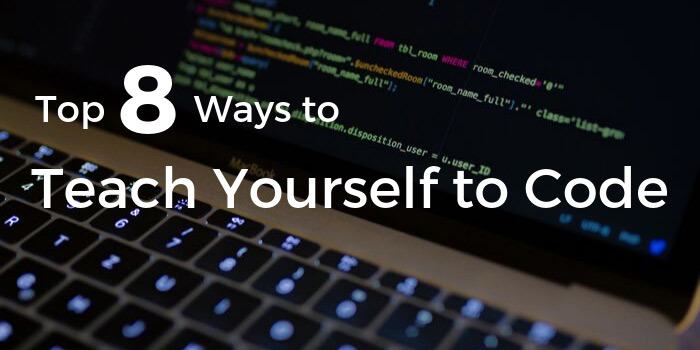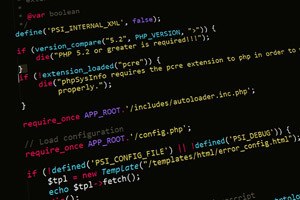Learning to code may sound daunting, but it really isn't all textbooks and online tutorials. Sometimes, taking an unconventional path makes things more interesting.
Coding is a skill, and like any skill, sometimes it's easier to learn when you get creative. Here are eight fun and quirky ways to dive into coding and keep things light.

1. Code with Music
If you’re the type who gets motivated by music, why not combine it with learning to code? There are platforms where you can code to generate sounds and music. This might sound wild, but it actually helps in making coding less dry and more interactive.
What this looks like:
- Platforms where you write code to create beats and rhythms, changing the structure of the music with loops and variables.
- Making your own music using JavaScript or Python, experimenting with sounds based on different coding inputs.
- Creating a program where specific code snippets trigger a particular tune, combining creativity with logic.
Learning to code through music adds an artistic layer to the process, making it more exciting and hands-on.

2. Play Coding-Based Games
Games have a way of making learning fun, and coding games are no exception. Some platforms are designed to teach you programming concepts while you play. These games disguise learning by giving you tasks that secretly build your coding skills.
Some examples include:
- Moving characters through mazes by writing basic commands, which introduces you to concepts like loops and functions.
- Completing puzzles that require logic and programming knowledge to solve, unlocking higher levels as your coding improves.
- Using block-based coding, where you drag and drop commands to make characters in the game perform tasks.
Playing games takes the pressure off and lets you pick up skills without even realizing you’re learning something complex.
3. Build a Personal Website
Sometimes, diving straight into a project is the best way to learn. Building your own personal website, even if it’s simple, forces you to learn HTML, CSS, and a bit of JavaScript. It’s a small project, but it teaches you foundational coding knowledge in a real-world context.
Here’s what happens:
- You start with basic HTML to structure your site—creating headings, paragraphs, and links.
- You get into CSS to make it look good—changing colors, adding borders, and spacing things out.
- You might dip into JavaScript to add some cool interactivity, like buttons that react when clicked.
By working on something personal, you stay motivated, and every bit of progress is a small reward.

4. Learn Through Memes
Coding memes are all over the internet, and while they might be hilarious, they’re often educational too. The humor behind the memes usually touches on real programming concepts, problems, and scenarios. You can laugh at them while still learning something new.
What this might look like:
- Browsing through coding meme groups or pages and realizing the jokes are based on actual programming struggles or logic issues.
- Memes about bugs, debugging, and syntax errors that teach you to expect and fix common mistakes.
- Sharing memes with friends or fellow learners, laughing at shared experiences while picking up on the language of coding.
It’s a quirky way to get familiar with coding culture and pick up concepts in a lighthearted way.
5. Code Your Favorite Recipe
If you’re into food, why not combine your love of cooking with learning code? Try writing code to display your favorite recipes, or even create a simple app that organizes recipes for you. It’s a small but fun way to get into the logic behind coding.
This involves:
- Writing out your recipe as a sequence of steps using Python or JavaScript, treating each step as a function or command.
- Creating a recipe list with ingredients as variables, turning what’s in your fridge into a mini-coding project.
- Building a small app or webpage where you store and organize recipes, using it as a way to learn input fields and basic app structure.
By mixing your personal interests with learning, you might find that coding is a lot more enjoyable than you thought.

6. Automate Boring Tasks
Ever get tired of doing the same repetitive things online? Coding can help with that. One way to teach yourself programming is to write simple scripts that automate those boring tasks, like sorting files, renaming multiple documents, or even automating parts of your social media.
Some things to automate:
- Sorting a messy folder of files on your computer, using a Python script to organize by date, size, or type.
- Automating small tasks like sending reminder emails, downloading files, or even copying data from one place to another.
- Writing a program that generates a to-do list or calendar entries based on a simple prompt you give it.
It’s a creative way to practice coding while also making your everyday life a little easier.
7. Solve Coding Puzzles on the Toilet
This might sound weird, but everyone’s looking for productive ways to pass time on the toilet, right? Why not bring coding into the mix? You don’t need a laptop for this—there are plenty of apps with coding puzzles you can solve on your phone. It’s a low-pressure way to get a little better at coding during otherwise wasted moments.
How this works:
- Using apps that present bite-sized coding problems, challenging you to solve them quickly while sitting around.
- Tackling logic puzzles that train your brain to think like a programmer, sharpening problem-solving skills in short bursts.
- Spending just five or ten minutes at a time building those coding muscles, using moments you’d otherwise spend scrolling through social media.
It’s a funny, but surprisingly practical way to keep learning even when you’re not at your desk.
8. Code with Friends Over Drinks
Learning to code doesn’t have to be a solo endeavor. In fact, getting a group of friends together to code over drinks or snacks could be one of the most fun and social ways to pick up the skill. You don’t need to be in a formal classroom setting—sometimes having fun with others is all you need.
What this might look like:
- Setting up coding challenges where each person has to solve a small problem, and everyone works together to figure it out.
- Sharing small projects and asking each other for advice or feedback, turning it into a coding hangout instead of a study session.
- Competing to see who can write the shortest or funniest code to solve a given problem, adding a bit of friendly rivalry to keep things interesting.
Coding with friends turns what could be a lonely task into a fun, social event, making it easier to stay motivated and share what you’re learning.
Wrapping It Up
Teaching yourself to code doesn’t have to follow the traditional route. There are so many wacky and creative ways to get into coding without sitting through hours of dry tutorials. Whether it’s coding through music, turning your favorite recipe into code, or even solving coding puzzles on the toilet, the key is to find what keeps you interested. Coding is a skill, and there’s no wrong way to pick it up. Just have fun with it and explore these unconventional methods—you might surprise yourself with how much you can learn.
Did You Know You Already Have A LOT To Sell?
So What's Your Problem?


